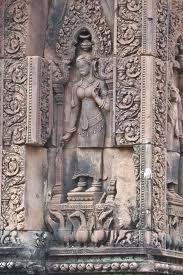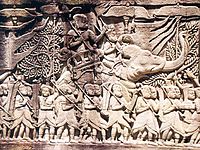Beliefs and Values in the Khmer Empire Blog 1
|
The
Khmer Empire was located in what is now known as Cambodia. The Khmer Empire was
the most powerful Empire in Southeast Asia. The Khmer Empire was from 802 CE to
1431 CE. Over time, the Khmer`s Empire`s values and beliefs changed. In the
earlier time of the Khmer, the main religion was Animism. But as time went on
there were shifts of two main religions, Hinduism and Buddhism.
Buddhism had two forms, Mahayana and Theravada Buddhism. Before
Buddhism and Hinduism reached the South-East Asia, South-East Asians were
Animists. At the start of the Khmer Empire when Animism was the main
religion, they believed that natural phenomena had souls; Animists worshipped
the spirits of their Ancestors. The spirits worshipped could be wind, rain,
animals and trees. As well as believing in natural phenomena, Animists believed
in the life after death. The first religion to come to South-East Asia was
Hinduism. Ancient Hindu started in India
and has numerous gods. Throughout centuries, Hindus began to worship only one
Hindu god. A major part of the belief is reincarnation. They believed that
every living thing have spirits and after death the soul would be reborn, over
and over until it is free by realising spiritual happiness. South-East Asia
then established Mahayana Buddhism which had some of the same beliefs as
Hinduism, but with the Noble Eightfold path to escape reincarnation. Mahayana
Buddhism believed that the Buddha should be worshipped. Monasteries and sangha
became significant in the societies in the Khmer Empire, it was introduced by
Buddhists. These religions had an impact on the communities; they inspired
religious art, construction and the writing system. After the amalgamation the
people of Khmer Empire were happy, spiritual and worshipping the ancestors. Three Hindu gods, Shiva, God of Rebirth and Destruction, Vishnu, the Protector and Brahma, the Creator. 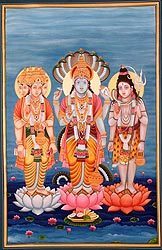
Social Pyramid 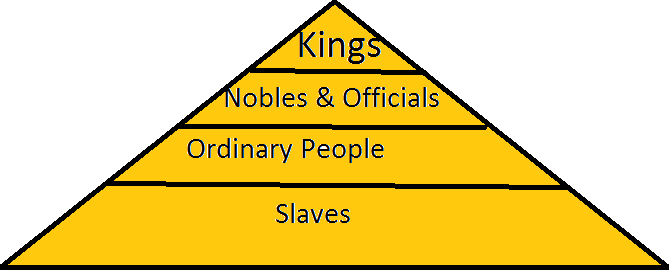 Asparas dancing goddess, carved on a temple wall. 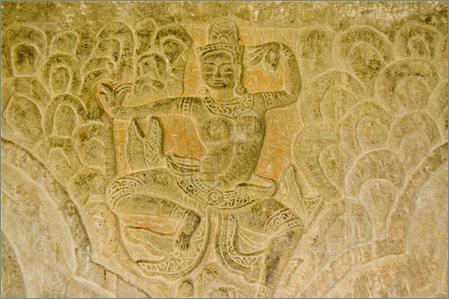
There were vast differences in the classes, despite all the similarities. The classes were very distinct. There were Kings, Nobles and Officials, Peasants and Artisans. The Kings, thought to be semi-divine, identified themselves with Hindu Gods, had magical powers and used practical ways to achieve power. To make sure the King, Yaravarman VII brought productiveness to the land; he established the cult of the devaraja. The cult made the people worship the Linga of the god-king. The Nobles had great control in order to support the king but there was a really big difference between the Nobles and the rulers. Various Nobles inherited the positions. In the remote regions, as long as the Noble didn’t threaten the Monarch`s power, the Noble would have almost complete power. From the Angkor Wat there is great amount of proof about the lives of Nobles and their Armies. To gain and maintain the great amount of land the Khmer Empire used Armies, with elephants, cavalry and infantry. They were equipped with spears, swords and bows. They were all lead by the Nobles. When the Nobles were at war they were considered as warriors. Whilst the wars the ordinary people supplied excess food for Nobles and constructed amazing works for the ruling class. Comparatively, the Nobles and the Peasants had the people of all the classes. Peasants work on land and farmed rice foods and vegetable gardens. Although the peasants got to work on land, they did not get to own any land. Peasant lived more simple then the Nobles but when Zhou Dagaun describes in his work that the houses had no thatched roofs. He also said that peasants had no tables and chairs and ate their food in woven leaves. The work that the Nobles did was nothing compared to the hard work of Peasants and Artisans. Only a tiny section of the population were Artisans but they were crucial for the Noble`s way of life. Artisans specialised in crafts like construction, jewellery or pottery, they also supplied war weapons. Some even worked as tailors. The Noble how much more power than Peasants and Artisans but immoral life.
Webpage page made by Kelsey Graham Class: 7 Lawson Teacher: Mrs Nairn 2013
|
